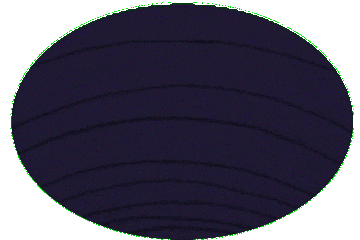London Underground
The London Underground (also known simply as the Underground or as the Tube) is a rapid transit system serving Greater London and some parts of the adjacent home counties of Buckinghamshire, Essex and Hertfordshire in England. It is part of the network of transport services managed by Transport for London. The Underground has its origins in the Metropolitan Railway, opening on 10 January 1863 as the world's first underground passenger railway. Despite sulphurous fumes, the line was a success from its opening, carrying 9.5 million passengers in the first year of its existence. The Metropolitan is now part of the Circle, District, Hammersmith & City and Metropolitan lines. The first line to operate underground electric traction trains, the City & South London Railway in 1890, is now part of the Northern line. The network has expanded to 11 lines with 250 miles (400 km) of track. However, the Underground does not cover most southern parts of Greater London; there are only 33 Underground stations south of the River Thames. The system's 272 stations collectively accommodate up to 5 million passenger journeys a day. In 2023/24, it was used for 1.181 billion passenger journeys. The system's first tunnels were built just below the ground, using the cut-and-cover method; later, smaller, roughly circular tunnels—which gave rise to its nickname, the Tube—were dug through at a deeper level. Despite its name, only 45% of the system is under the ground: much of the network in the outer environs of London is on the surface. The early tube lines, originally owned by several private companies, were brought together under the Underground brand in the early 20th century, and eventually merged along with the sub-surface lines and bus services in 1933 to form London Transport under the control of the London Passenger Transport Board (LPTB). The current operator, London Underground Limited (LUL), is a wholly owned subsidiary of Transport for London (TfL), the statutory corporation responsible for the transport network in London. As of 2015, 92% of operational expenditure is covered by passenger fares. The Travelcard ticket was introduced in 1983 and Oyster card, a contactless ticketing system, in 2003. Contactless bank card payments were introduced in 2014, the first such use on a public transport system. The LPTB commissioned many new station buildings, posters and public artworks in a modernist style. The schematic Tube map, designed by Harry Beck in 1931, was voted a national design icon in 2006 and now includes other transport systems besides the Underground, such as the DLR, London Overground, Thameslink, the Elizabeth line, and Tramlink. Other famous London Underground branding includes the roundel and the Johnston typeface, created by Edward Johnston in 1916.
This article uses material from the Wikipedia article "London Underground", which is released under the Creative Commons Attribution-Share-Alike License 3.0.
References
| Title | Summary | |
|---|---|---|
| May 6 - Walking Around London | ... stopped. We boarded the London Underground at a ... | |












